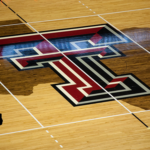On the Diamond
 Texas Tech softball swept Cincinnati in the final game yesterday, a nice 7-4 comeback win. This was the first series sweep for the program since 2016 and Texas Tech is 11-1 in the Big 12. They won’t play again until this weekend where they will host Houston.
Texas Tech softball swept Cincinnati in the final game yesterday, a nice 7-4 comeback win. This was the first series sweep for the program since 2016 and Texas Tech is 11-1 in the Big 12. They won’t play again until this weekend where they will host Houston.
 Texas Tech baseball was able to salvage the double-header on Sunday. They’ve got a mid-week game in Albuquerque against New Mexico tomorrow.
Texas Tech baseball was able to salvage the double-header on Sunday. They’ve got a mid-week game in Albuquerque against New Mexico tomorrow.
On the Hardwood
 I posted last night about Darrion Williams testing the NBA waters and also entering the transfer portal.
I posted last night about Darrion Williams testing the NBA waters and also entering the transfer portal.
 ESPN with predictions on tonight’s championship game between Florida and Houston, tip-off is 7:50 p.m. on CBS.
ESPN with predictions on tonight’s championship game between Florida and Houston, tip-off is 7:50 p.m. on CBS.
On the Gridiron
 CBS Sports’ Dennis Dodd on what to know ahead of the House v. NCAA settlement that was scheduled for today:
CBS Sports’ Dennis Dodd on what to know ahead of the House v. NCAA settlement that was scheduled for today:
The result of House establishes a compensation model outside of the NCAA. It will be overseen by Judge Claudia Wilken, global auditing giant Deloitte and the Power Four commissioners. They will hire a CEO and a board to police the House elements that essentially continue to cap compensation for athletes.
At the heart of this discussion is that cap — about $20.5 million annually. It is optional for schools to establish a revenue-sharing fund to be divided between all sports. However, a handful of states, Colorado and Nebraska among them, have passed laws allowing schools to pay athletes an uncapped amount. That sets up a potential showdown with the NCAA, which is never a good thing for the governing association overseeing college athletics.
It’s also how House could fall apart, because if one thing is certain, there will be more lawsuits following Monday’s hearing. A template for player compensation was established in 2019 when California Sen. Nancy Skinner pushed through the nation’s first NIL law that allowed players to profit from their name, image and likeness. It also prohibited the NCAA from penalizing state schools that entered into NIL deals with athletes. Then-NCAA president Mark Emmert threatened schools that paid players with expulsion from NCAA championships.
 CBS Sports’ Dennis Dodd also writes about how college football is still leaving billions on the table and is undervalued, which is why it is ripe for venture capitalists and bigger streaming deals down the line.
CBS Sports’ Dennis Dodd also writes about how college football is still leaving billions on the table and is undervalued, which is why it is ripe for venture capitalists and bigger streaming deals down the line.
Those with Wasserman’s view are talking about a $4 billion-$5 billion valuation shortfall in college football. The Power Four media rights deals are currently worth a combined $17 billion — and that’s not counting the $1.3 billion College Football Playoff deal with ESPN. That’s mainly because conferences negotiate individual media rights that suit them but doesn’t necessarily maximize revenue.
The sides on either end of the discussion have separated like political parties. One side is ready to tap into that valuation like it’s a new vein of crude discovered in the North Dakota oil reserve. The other is a formidable blockade with a desire to keep the status quo — and power.
That reckoning Wasserman is referring to is upon us. The revelation of the Super League and Project Rudy last year reflected at least proposals to gather the game’s top powers in one league and bundle their rights. (The Super League is proposing 72 teams, while Project Rudy would feature 70 teams. There are currently 134 FBS programs.)









